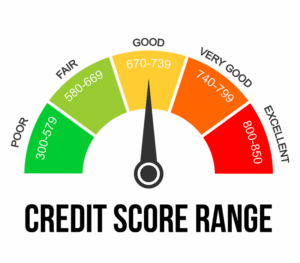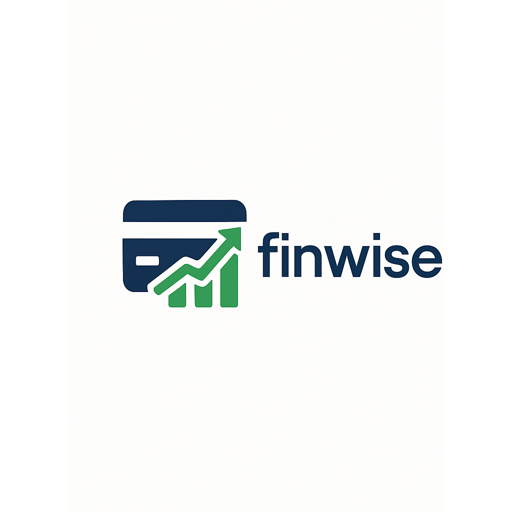Credit Score Secrets: Boost Your FICO Fast in 2025
Your credit score can throw open a lot of — or slam a lot of — doors in your life. If you’re attempting to get approved for a credit card, apartment rental or mortgage, your FICO score determines whether the process will be easy —or impossible. Lenders are becoming even warier of credit risk in 2025, so the need to have a higher score is more paramount than ever.

If you’re looking to increase your credit score in a hurry – let’s say, because you want to apply for new credit or take advantage of better interest rates – this guide can save you time as it breaks down the single most effective steps now to bump up your FICO fast without any gimmicks or hacks.
Know What Truly Matters to your FICO Score
You can’t better your credit score until you know what impacts it. The FICO score most commonly used among top U.S. lenders is determined by using five main ingredients:
Payment History (35%) — Missed or late payments sting the most.
Credit Utilization (30%) – What percentage of available credit you are using.
Length of Credit History (15%) – The age of your credit accounts.
Credit Mix (10%) – The mixture of credit (cards, loans, etc).
New Credit Inquiries (10%) – Applying for several credit cards at once can be a drag on your score.
By 2025, FICO 10 and FICO 10T score models are becoming more widely adopted. These models use trended data, meaning they analyze your payment behavior over time — not simply a snapshot of where your account stands today. This is why the importance of consistent habits has never been more important.
Strategically Pay Down Your Credit Card Balances
This is one of the quickest ways that you can see a score jump. Try to keep your credit utilization rate below 30%, and even lower, if you can manage it.
Example:
So if you have a credit card with a $5,000 limit and a $2,500 balance, your utilization is 50%. Paying that balance down to $500 lowers utilization to 10% — and may result in a big increase in your FICO score within a billing cycle.
Tips:
KEEP BALANCES LOW
On high-interest cards, switch balances to a lower interest card if you can.
Request a credit limit increase (without the hard inquiry) to bring your ratio down.
Make Sure You Never Miss a Payment – Sign Up for AutoPay Today!
A single late payment can lower your score by 60–100 points and remain on the report for seven years. Here’s how to prevent it:
Arrange for auto-pay of at least the minimum due.
Set calendar reminders or use budgeting apps.
If you have already missed a payment, get in touch with your lender and ask for a goodwill adjustment.
Remember, consistency is key. FICO now rewards patterns, so making your payments on time month after month can keep you ahead of the game in the long run.
Become an Authorized User
Do you have a family member or close friend with good credit? Ask whether he or she will add you as an authorized user on his or her credit card. And you don’t even have to use the card.
They may report their good history to your credit report, which can help you improve your:
Credit age
Payment history
Utilization rate
Just make sure they have had the card for a while, use it responsibly and never carry high balances.
Challenge Errors
Your Credit Report contains inaccurate information.
Your report can make mistakes that drive down your score. One in five people has an error on his or her credit file, according to the F.T.C.
Digital dispute tools from Equifax, Experian and TransUnion in 2025 have made it easier than ever to correct errors.
What to look for:
Accounts that are not yours
Incorrect late payments
Duplicate debts
Wrong credit limits or balances
Disputes can be filed online with each bureau. Corrections can appear within 30–45 days and might give your scores an immediate boost.
Take Out a Credit-Builder Loan or Secured Credit Card
If you have limited or no credit, or if you’re rebuilding after a setback, these may be an appropriate place to start:
Credit-builder loans: Available through credit unions or online lenders, payments are sent to the three major bureaus every month.
Secured credit card: You put down a refundable deposit (usually of $200 or more), and your activity is reported to all three credit bureaus.
Either way, concentrate on small purchases and paying them off in full each month.
Request a Pay for Delete or Goodwill Removal
Have collections on your credit report? If the debt is legitimate and you’ve paid (or are willing to), request that they delete it in return.
Two strategies:
Pay for Delete: Agreement to have a collection deleted after it has been paid.
Goodwill Letter: A friendly note asking the creditor to remove a negative mark due to reasons beyond your control or once you’ve paid off the debt.
It’s not guaranteed, but it’s worth a shot — and if you’re successful, your score could get a big bump.
Limit Hard Inquiries
Too many hard inquiries (from applying for credit), and your score may go down — plus potential lenders could see you as a risk.
Smart moves:
Don’t apply for lots of credit in a short amount of time.
Utilize prequalification tools that involve only soft inquiries.
Comparison shop for auto or mortgage loans in the same 30-day period — FICO counts this as a single inquiry.
Freely available tools to Keep Track of Your Progress
Monitor your progress and receive notifications using:
Credit Karma
Experian Boost
MyFICO
Mint
You can also fetch your full credit reports free once a week (through 2025) from AnnualCreditReport.com.
Final Thoughts
The Credit Comeback Begins Now
It doesn’t necessarily take years to lift your credit score. With intelligent, targeted actions and healthy lifestyle habits, you should be able to maintain weight loss for the long-term (while still enjoying a full life in the short-term) after just around 30–60 days of dieting.
Eight years and countless data points later, in 2025, that hasn’t changed; if anything it’s only made lenders more data-driven — but you have more resources and opportunities than ever to help control the outcome your financial future produces.
Begin today — your credit score is more than a number. It is a powerful way to create the life we desire.
Our Post

High Interest Rates, Credit Cards and the U.S. Consumer: What to Know in 2025
The Note: How Decelerating U.S. Economic Growth Affects Using Consumer Credit


